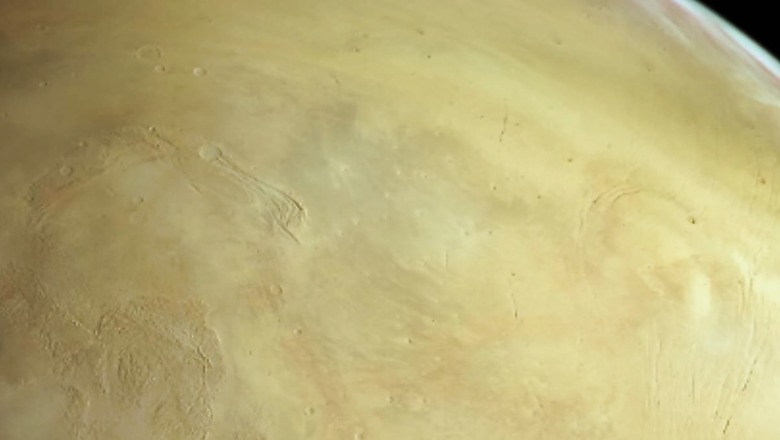
views
The Red Planet, Mars, never ceases to astound us with its mysteries. The planetary scientists had earlier concluded that Mars was dead, but in late 2003, Mars Express touched down on the planet. The orbiter’s long-term goal is to investigate the planet’s atmosphere and learn more about the water under the surface. On October 19, 2023, it completed its 25,000th orbit.
To commemorate the occasion, the European Space Agency (ESA) snapped a high-altitude picture of the Martian volcanic region. Sharing the picture carousel on Instagram, the space agency wrote, “This image showcases the Tharsis region, home to colossal volcanoes like Olympus Mons (over twice as tall as Everest!) and its neighbours.”
Despite being taken from various perspectives, the photographs depict the same location. One important tool for studying the Martian terrain is the spacecraft’s High-Resolution Stereo Camera.
The picture displays the Tharsis region of the planet, which is renowned for its massive volcanoes. Also, the picture has been annotated to highlight notable locations, such as Olympus Mons, which is the biggest volcano on Mars and the biggest known volcano in the entire solar system. To put things in perspective, Olympus Mons is around the size of Arizona, as per Forbes.
View this post on Instagram
The picture includes Arsia Mons, Pavonis Mons and Ascraeus Mons, three other prominent volcanoes that are arranged over the terrain. In the lowest part of the picture is the area that resembles a wrinkle, which is Noctis Labyrinthus, also known as the Labyrinth of the Night. There is a system of deep, disintegrated canyons present. A recent evaluation of the area was released by scientists, showing what seems to be a freshly found enormous volcano along its perimeter.
According to a press release from ESA, there are some interesting weather characteristics seen at the bottom of the image, where a blue tint sometimes appears in a usually sand-coloured environment. The multicoloured bands are clouds, with a narrow, bright band to the right and rippling lee wave clouds to the left.
Lee wave clouds form when air stacks get a sudden boost in speed when they pass over an obstruction on the ground below, such as an elevated ridge. The air, then, creates a wave-like structure on the ridge’s protected (lee) side.
Numerous things about Mars have come to light through the Mars Express, including the mapping of its minerals, investigation of the makeup and movement of its atmosphere, exploration of its subsurface, and research of the Martian environment.















Comments
0 comment